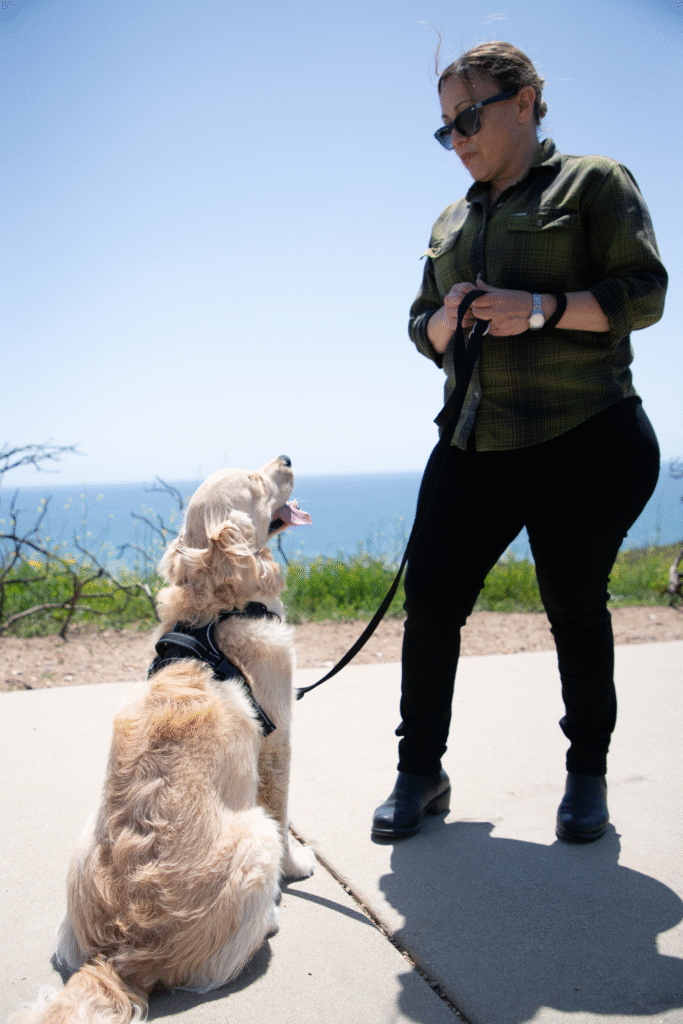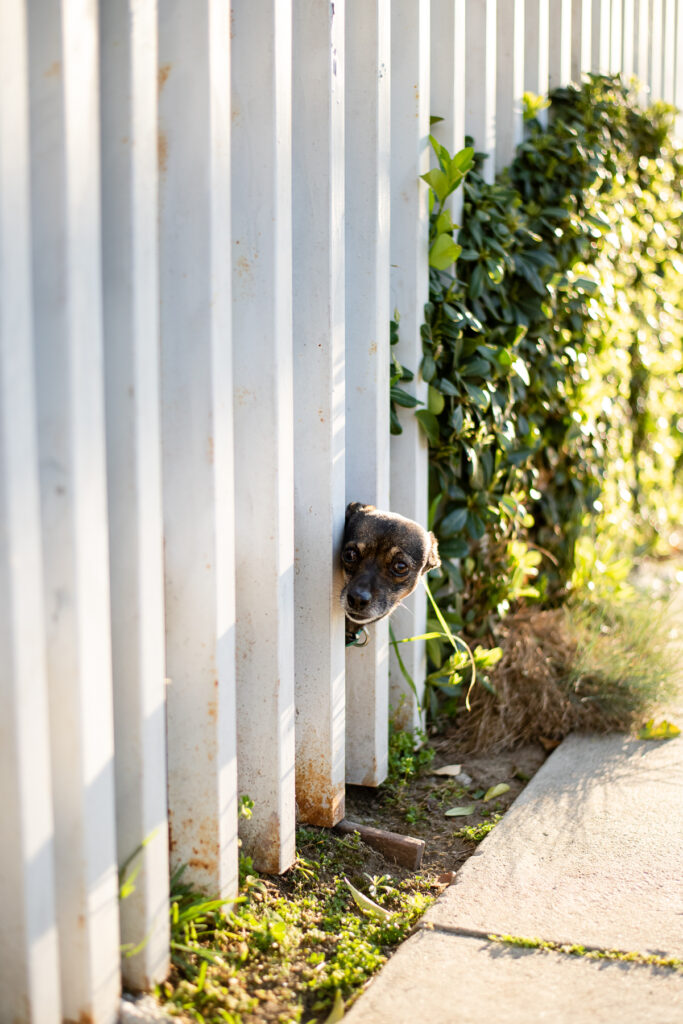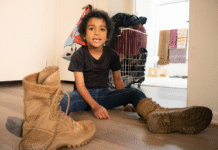Families build a love of fostering pets
Phyliss Siebold opened her Facebook 12 years ago to a post of a white poodle terrier mom and her four 19-day-old puppies. The puppies were dumped at a shelter and going to be euthanized if nobody took them in to foster. So, Siebold contacted the rescue to let them know she was willing to take the dogs.
The rescue employees showed up to her home and dropped off the animals. Their eyes were closed and they fit in the palm of her hand. The stress of the shelter environment caused the mother of the puppies to not be able to feed them, so Siebold would soon have to bottle feed them.
This led the Siebold family to start fostering pets. Regardless of the challenges that come with foster pets in a household, this journey was exciting for them.
“They were over the moon,” Siebold said. “My kids loved it. The neighbors loved it. When I had puppies, my doorbell would be ringing. Like, people would tell people, ‘The house has puppies, go visit.’ People I didn’t even know were knocking on the door to come see them.”
The Siebold family is a part of the 8% of households that foster pets in the United States. Fostering animals provides support and a temporary home for animals to prepare them for their forever home. According to the American Society for the Prevention of Cruelty to Animals (ASPCA), around 6 million animals are taken to U.S. animal shelters every year, and about 4 million of those animals are adopted.
Fostering pets can increase the likelihood of adoption. According to a study by Mary Lou Fulton Teachers College, foster-to-adopt programs have an adoption rate of 73%.
At the beginning of her family’s journey, Siebold fostered dogs during the week and had a schedule to take them to the shelters on the weekends for viewings, hoping that they would be adopted.
Family friends ended up adopting the mom and three of the puppies, because they were often going over to Siebold’s home. Siebold decided to keep and adopt one of the puppies herself.
Siebold and her family have fostered 30 dogs in the last 12 years. When they first started fostering, her daughter was 5 and her son was 8.
Having families foster is helpful because many animals in shelters need to be exposed to being in a new environment for them to be on the road to adoption.
“Some of them need socialization and so, because I have kids and my kids were young and there were always people in my house and I had a busy life, we were always running everywhere. The dogs got exposed to people and kids and so I was able to socialize some of them,” Siebold said.
Three years ago, Siebold learned of a new foster dog whose owner died. The dog had been dumped on the street and needed a place to stay. The rescuers found the teacup terrier poodle with only a couple of teeth, mammary tumors and blindness crying in the bushes.
When she first saw the dog, she spoke with the rescue and wondered if fostering would be beneficial for the dog, as she looked to be in terrible condition. Siebold said the teacup poodle got attached to her. The foster dog was blind, walked on three legs and was older, so Siebold contacted the rescue and told them they needed to find someone that could give her all the attention she required and needed. They convinced Siebold to stick with the dog through her surgeries and rehab, and they would look for a different foster family once was ready. Siebold never reached out again to find the dog another foster, and she has now had the teacup terrier poodle for three years.
“My life is like having a baby. Because like when I leave every day, it’s like what am I doing today, what am I doing with her?” Siebold said.
Siebold’s children grew up fostering dogs and it was familiar to them. She shared that her daughter is getting ready to graduate high school and head off to college.
“My daughter is going to be a veterinarian. That’s what fostering did,” Siebold said.
Fostering heavily impacted Siebold’s family, as her daughter’s career path was inspired by fostering from a young age. It came with challenges of having to experience a loss of getting attached to an animal and then having to give it up. But, it was rewarding to be a part of the dog’s journey.
“You see the family that’s adopting them and how excited and how much in love they are with them already, so it touches your heart to see that,” Siebold said. “It’s so rewarding and so much fun. You save two lives, because you rescue one and make room for another.”
Helaine Kroll was always a pet owner. She got a message from someone asking if she was interested in fostering a 3-year-old German shepherd. Kroll was told the dog needed to be rehomed because she was too much for the family, but was great with kids.
However, Kroll discovered this was not the case. The process of Kroll receiving the dog was rushed, and the dog was dropped off to her within days.
“She latched on to me so hard and so fast that she became an instant protector inside my own home,” Kroll said. “She wouldn’t let my daughter near me, she’d bark at anybody that came near me, she’d bark aggressively at anybody that came near me, she’d bark incessantly at anybody that had a conversation with me.”
While on a walk with the foster dog, Kroll was cleaning up after the dog when a man walked by, causing the dog to go into protection mode. With concern, Kroll decided to reach out to the people she rescued the German shepherd from, but they were persistent that she keep the dog regardless of the concerns she had.
This foster dog showed behaviors of aggressive protection toward Kroll, making it difficult for her to have people over at her home.
Considering that many foster animals can be aggressive or scared coming into a new environment, many foster families turn to training. Sara Levy-Taylor is a certified companion animal behaviorist and professional dog trainer with more than 15 years of experience. Around 40% of her clients are dogs who are rescues or fosters.
Challenges may vary for families who foster pets and have younger children. Levy-Taylor shows pet owners how to respond to animals and informs them of reasons why an animal might be having a difficult time adjusting to a new home.
Children are expected to be curious when a new pet enters their home. It is normal for them to want to pet and hug the dogs without knowing the precautions they need to take.
“It’s important to recognize the body language from a dog and give the dog the choice to approach,” Levy-Taylor said.
Children can tend to be a bit noisier, so Levy-Taylor gives families techniques on how to manage those situations.
“There needs to be ground rules in place so you know when the dog is sleeping, if the dog is eating, to be left alone,” Levy-Taylor said. “The dogs can bond with any age including with babies, but really it’s just about supervising and being responsible, and everyone being on the same page with how to interact with the dog, and recognizing when the dog is not comfortable.”
Even though she had a more challenging experience with fostering and did not continue to regularly foster, Kroll shared the true meaning of fostering and the impact it has on not just her, but on the animals.
“When foster families step up and take dogs into their home they make room for more dogs to come out of shelters,” said Kroll. “It’s about the animals, not about me.”





